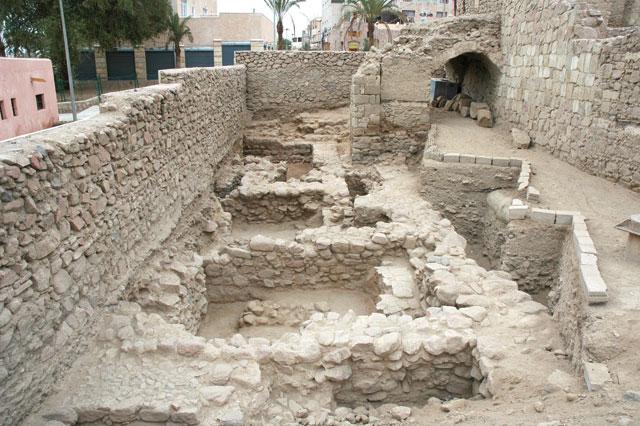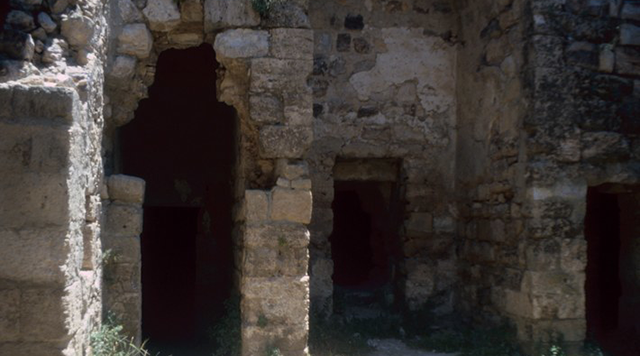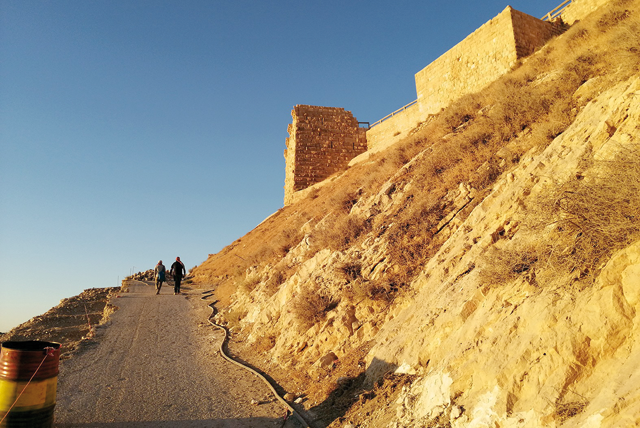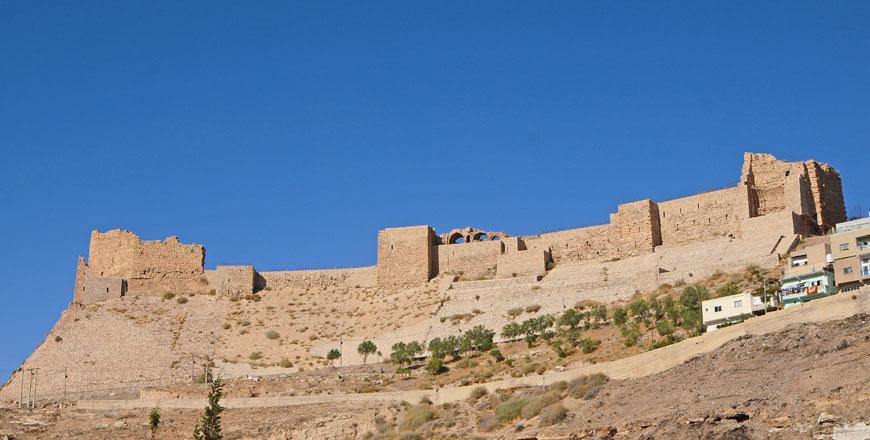You are here
Jordanian scholar strolls through history of Islamic waystations
By Saeb Rawashdeh - Jan 09,2018 - Last updated at Jan 09,2018

The remains of the Ayyubid and Mamluk khans from 14th century in Aqaba (Photo courtesy of Reem Al Shqour)
AMMAN — Research Associate at Andrews University Reem Al Shqour undertook the task to write about Islamic waystations because she thought that in spite of available material evidence not so many scholars tackle the topic of pre-Ottoman and Ottoman waystations on the pilgrimage route to Mecca.
“Actually, there have only been two studies that have focused on khans [waystation] in Jordan in any depth: the first is my own MA thesis, ‘Roman Fortress to Islamic Khan in Jordan: An Archaeological Look at Structural Continuity in Defence Systems’, in which I examined the relationship of the earliest khans with Roman and Byzantine fortresses by focusing on morphology [the physical layout] and structural continuity,” the expert said, adding, "the second study is done by Andrew Peterson which focused on khans of the Ottoman period.”
There had been no sufficient studies of khans during the Ayyubid/Mamluk period, nor a study that provides “a complete diachronic analysis of khan development from their initial appearance in the Umayyad times, through to the Ottoman period”, the scholar, specialised in Islamic Archaeology, claimed.
Elements of the khan
“Through examining the morphological elements of the Islamic khan and by comparing these elements with earlier structures with the same or similar features, we discovered that the structural antecedents for the Islamic khan go back earlier than the immediate predecessors known from the Roman/Byzantine fortifications,” Shqour told The Jordan Times in a recent e-mail interview.
Indeed, the basic layout known as the courtyard fortification pattern can be traced back as early as the Late Bronze and Iron Ages, she pointed out, noting that ancient literary sources show that at different times they provided a variety of functions beyond merely guarding routes and offering supplies for travellers and merchants.
“The importance of the khan continues to increase from the early Islamic period towards the late Ottoman period,” Shqour noted.
“After our analysis of the function of similar structures in the Bronze and Iron Age, classical, Byzantine and early Islamic periods, the khan of the Late Islamic period continued to serve similar functions as in earlier antiquity — although a few additional functions were added that fit the unique needs of the Islamic pilgrims,” the Jordanian scholar underlined.
The archaeologist listed services provided by Islamic khans in Jordan: serving as a shelter for ill pilgrims during the Hajj (the greater Muslim pilgrimage to Mecca); providing food for poor people; providing a place to deposit belongs for the return trip; serving as a residence for the guards protecting the water (tanks, wells, etc.); serving as a residence for some local families, pilgrims and in many cases, with merchants from neighbouring countries; providing a place of quarantine, as the case in Zarqa; providing barracks for the military who would provide protection for the pilgrims, rather than serving in a military defensive capacity; providing a post office service, as the case of Qatrana; providing a warehouse for storing grains and fodder for animals and selling it for pilgrims at the nearby market.
Aqaba castle
The castle at Aqaba provides a convenient history of a typical Jordan khan — especially for the late part of the Islamic period, she said, adding that the excavations have revealed the development of, both the physical elements, and the functions of these khans.
“These excavations can also be tied to the historical sources which show that Aqaba was located at an important crossroad for Syria, the Mediterranean, Hijaz and south Arabia. It rose to importance during the Islamic periods as a strategic trade centre and rest stop for caravans,” Shqour emphasised.
The earliest occupation is an agricultural settlement, established in the 8th-12th centuries AD in conjunction with Islamic Ayla, using the oasis near present castle, the scholar highlighted, saying that water wells indicate garden agriculture using fresh water from local wells.
However, the earliest khan built on the site dates back to late 12th-early 13th century, after the Crusader’s incursion, she maintained.
This first khan can be compared to Khan Al ‘Arus located north of Damascus, which was built in 1181/82 by Saladin, Shqour elaborated.
Regarding the northern half of the west wing, there are clear indications that a number of rooms were reconstructed — likely after earthquake damage, the researcher explained, adding that the reconstruction maintained the same size of the earlier rooms while additional cells were built against the east and north walls.
“The reconstruction can be attributed to the Mamluk Sultan Al Zahir Baybars, she said.
In the 14th century the interior of the khan was reorganised: the cells of the west wing were removed and new rooms built; cells were also built against the south and north walls, the Jordanian expert underlined.
“At least one tower was built, completing the defence system on the southwest corner; it is clear that the 2nd khan was partly rebuilt after the earthquake in 1312. It was probably rebuilt in conjunction with the arrival of the Mamluk governor and his garrison from Jazirat Fara‘un around 1320,” she stated.
The recent excavations show that the second khan was abandoned in the late 15th century while the third khan was built by the last Mamluk Sultan Qansawh Al Ghawni in 1509 and not in the known date of 1515, Shqour highlighted.
Later building work included that associated with the Ottoman Sultan Murad III in 1588, the scholar said, noting that the excavation of the polygonal southwest tower shows that it was rebuilt after the construction of the early 16th century khan.
Furthermore, the 17th-18th centuries witnessed extensive reconstruction of the khan cells and mosque while in 1830 the castle was used as a military fort by Mohammed Ali, Shqour said.
The north and south east towers were rebuilt as round towers. By 1850, probably during the time of Abbas Hilmi I, cells were removed to enlarge the courtyard and make officers’ quarters, she said.
“Since 1964, reconstruction of the qalaa [castle] has been undertaken by the Awqaf office of Aqaba and the Department of Antiquities, the later rebuilding mainly for touristic reasons," Shqour concluded.
Related Articles
AMMAN — The Karak Castle has a prominent role in history of crusades and post-crusade Mamluk-Ottoman periods.
AMMAN — With the aim of identifying the urban setting outside the Shobak Castle and its rural resources between 12th and 16th centuries, an
Amman — Karak Castle is the most famous Crusader-Islamic military site in Jordan and appears today as a perfect summary of Crusaders’, Ayyub


















